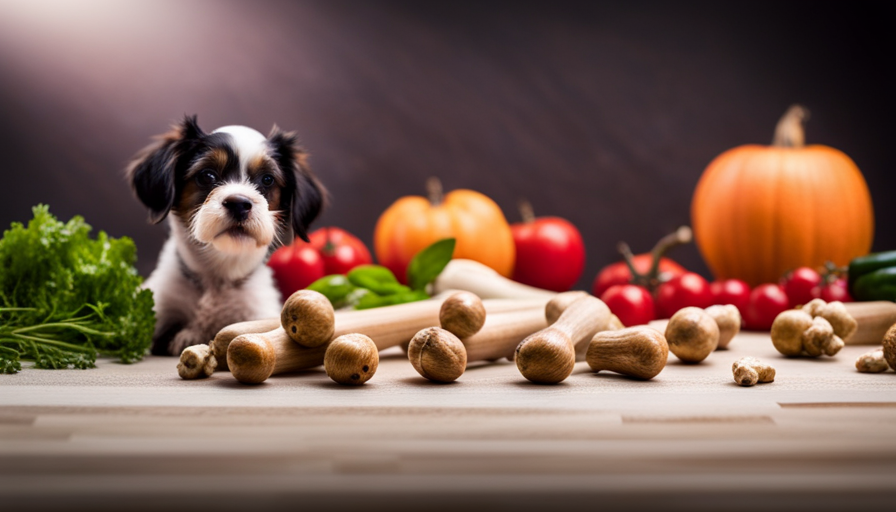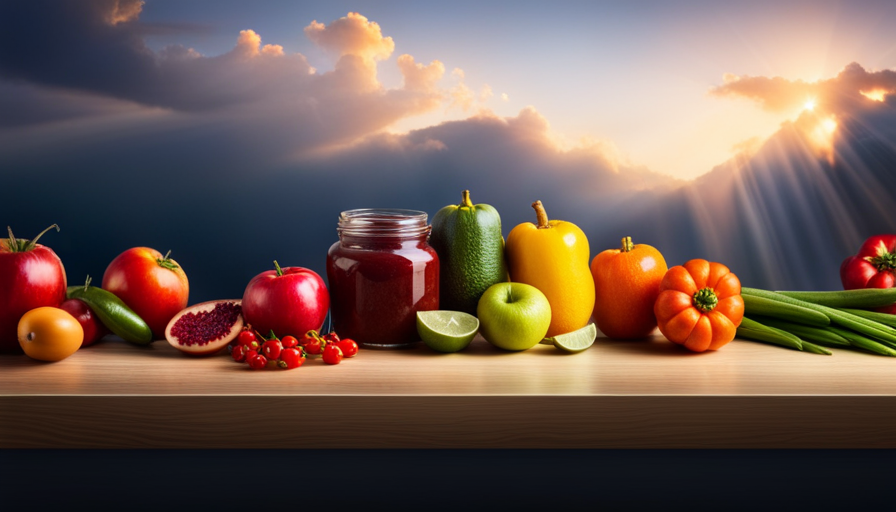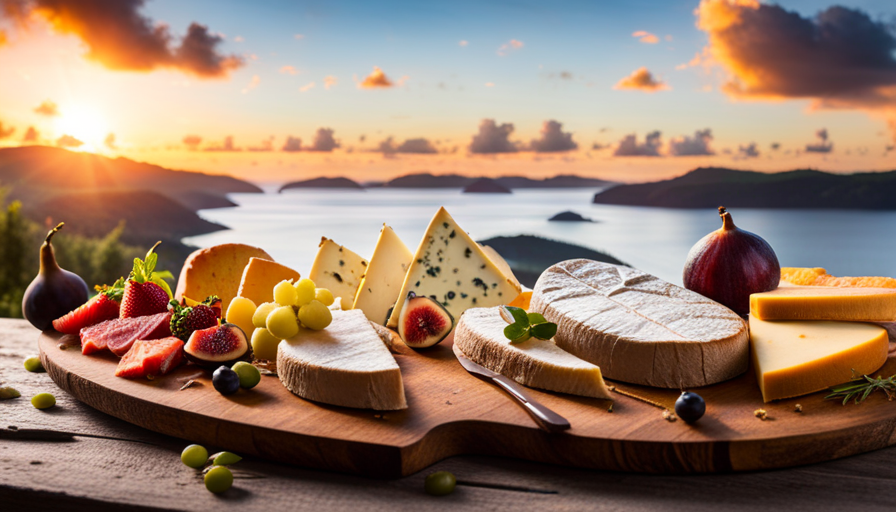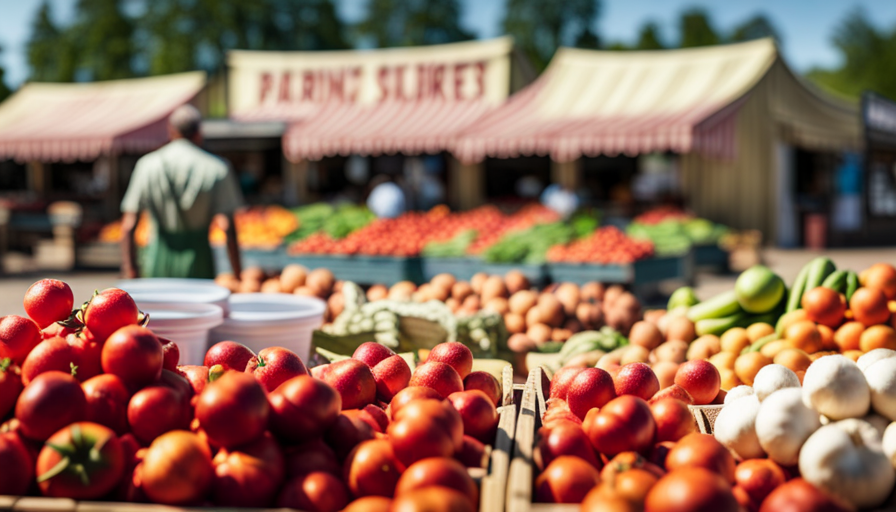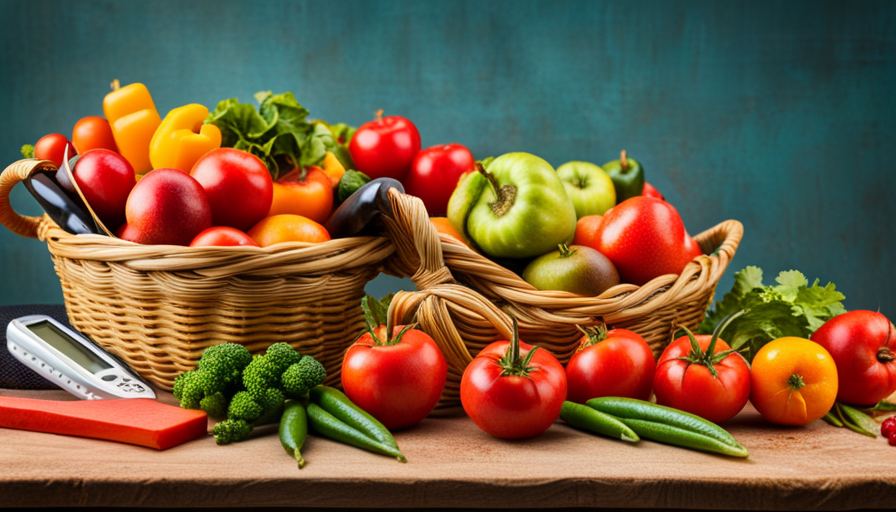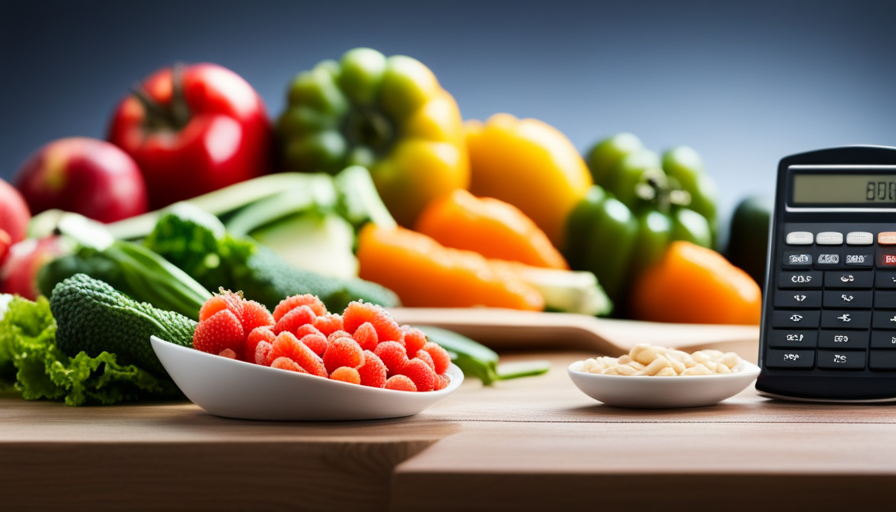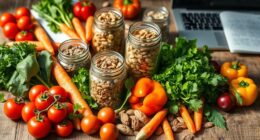Imagine a blank canvas, ready to be adorned with bright colors and intricate patterns. This is how I envision a puppy’s health and well-being. Just like an artist carefully chooses their paints, we, as puppy parents, must choose the right nutrition to create a masterpiece in terms of vitality.
Raw food for puppies is like a vibrant brushstroke, providing a foundation of optimal nutrition that can unlock their full potential.
In this article, I will delve into the scientific realm of raw food diets for puppies, exploring the numerous benefits they offer. We will explore the nutritional needs of growing pups, the importance of consulting with veterinarians, and the gradual transition to a raw food diet. Additionally, I will provide insights on calculating the perfect portion size based on age and weight, as well as the significance of a diverse range of raw food sources for balanced nutrition.
So, join me on this evidence-based journey, as we unravel the wonders of raw food for puppies and learn how much is just right for our beloved furry companions.
Key Takeaways
- Raw food diets for puppies provide essential nutrients for growth and development.
- Transition to a raw food diet gradually to prevent digestive upset.
- Portion size should be calculated based on age, weight, and activity level.
- Monitoring weight and adjusting portions is crucial for a growing puppy’s health.
The Benefits of a Raw Food Diet for Puppies
Feeding your puppy a raw food diet will give them a healthy and vibrant start in life, setting them up for a lifetime of vitality and happiness. Raw food benefits for puppies are numerous and well-documented.
Firstly, raw food diets provide puppies with a rich source of essential nutrients, including proteins, fats, vitamins, and minerals. These nutrients are crucial for their growth and development, supporting healthy bones, muscles, and organs. Raw food also contains enzymes and probiotics that aid digestion and promote a healthy gut flora, which is essential for a strong immune system.
Furthermore, raw food diets for puppies are free from artificial additives, preservatives, and fillers that are commonly found in commercial dog food. By eliminating these unnecessary ingredients, puppies are less likely to develop allergies, sensitivities, and digestive issues. Additionally, feeding puppies a raw food diet can help prevent obesity, as these diets are naturally low in carbohydrates and high in quality proteins.
Understanding the nutritional needs of puppies is paramount when considering a raw food diet. Puppies require a balanced combination of proteins, fats, carbohydrates, vitamins, and minerals to support their rapid growth and development. Providing the correct proportions of these nutrients is essential to ensure optimal health and prevent deficiencies. Transitioning to a raw food diet should be done gradually and with guidance from a veterinarian to ensure that all nutritional needs are met.
By feeding your puppy a raw food diet, you’re providing them with the best possible start in life. Understanding their nutritional needs and the benefits of a raw food diet will help you make informed decisions and give your puppy the foundation for a long and healthy life.
Understanding the Nutritional Needs of Puppies
Nourishing young canines requires a careful consideration of their unique dietary requirements. When it comes to feeding puppies, it’s essential to understand their nutritional needs.
One important aspect to consider is the puppy feeding schedule. Puppies have smaller stomachs and higher metabolic rates compared to adult dogs, which means they need to eat more frequently. It’s recommended to feed puppies three to four meals a day until they’re about six months old, gradually reducing it to two meals a day as they mature.
Another crucial factor to consider is the preparation of raw food for puppies. Raw food diets for puppies can provide them with essential nutrients, enzymes, and vitamins that are often lost during the cooking process. However, it’s important to ensure that the raw food is prepared safely to avoid any potential health risks. This includes using fresh, high-quality ingredients and practicing proper hygiene during handling and storage.
Understanding the nutritional needs of puppies and following a proper puppy feeding schedule are vital for their growth and development. If you’re considering a raw food diet for your puppy, it’s recommended to consult with your veterinarian for guidance on how to safely and appropriately implement this diet into your puppy’s routine.
Consult with Your Veterinarian for Guidance
Consulting with your veterinarian is a great way to ensure your puppy’s dietary needs are met and their growth and development are on track. Your veterinarian will have a wealth of knowledge and expertise when it comes to understanding the nutritional requirements of puppies. They can provide guidance on the appropriate amount of raw food to feed your puppy based on their age, breed, and specific needs.
During a veterinarian consultation, you can discuss the safety of feeding your puppy a raw food diet. While raw food can provide many benefits, such as improved digestion and a shinier coat, it’s important to follow proper food handling and hygiene practices to minimize the risk of bacterial contamination. Your veterinarian can provide you with information on safe handling techniques and proper storage of raw food to ensure your puppy’s health and safety.
Transitioning to a raw food diet should be done gradually to allow your puppy’s digestive system to adjust. Starting with small amounts of raw food and gradually increasing the portion size over time can help prevent any digestive upset. Your veterinarian can guide you through this transition process, ensuring a smooth and successful shift to a raw food diet for your puppy’s optimal health and well-being.
Start Slowly and Gradually Transition to a Raw Food Diet
Take it slow and ease your puppy into a healthier diet by gradually transitioning to a raw food regimen. The transitioning process is important to prevent any digestive upset or discomfort for your puppy. Start by introducing small amounts of raw food alongside your puppy’s current diet. Over the course of a week or two, gradually increase the amount of raw food while decreasing the amount of the old diet. This slow transition allows your puppy’s digestive system to adapt to the new foods.
To emphasize the importance of a gradual transition, consider the following table:
| Days | Old Diet | Raw Food |
|---|---|---|
| Day 1 | 75% | 25% |
| Day 3 | 50% | 50% |
| Day 5 | 25% | 75% |
| Day 7 | 0% | 100% |
By following this transitioning plan, you minimize the chance of digestive upset and allow your puppy’s body to adjust to the new diet more easily.
Once your puppy has fully transitioned to a raw food diet, it is important to calculate the right portion size for their age and weight. This will ensure they are receiving the appropriate amount of nutrients.
Calculate the Right Portion Size for Your Puppy’s Age and Weight
Determining the perfect portion size for your furry friend’s age and weight ensures their nutritional needs are met without overfeeding. When it comes to raw food diets for puppies, calculating the right portion size is crucial for their overall health and development.
Here are four key factors to consider when determining the portion size for your puppy:
-
Age: Puppies have different nutritional requirements at each stage of their growth. As they grow older, their portion sizes will need to be adjusted accordingly to support their changing needs.
-
Weight: The weight of your puppy is another important factor in determining the portion size. A larger puppy will generally require a larger portion size compared to a smaller one.
-
Activity Level: Puppies that are more active and energetic will require larger portion sizes to fuel their increased energy expenditure. On the other hand, less active puppies may require smaller portion sizes to prevent weight gain.
-
Raw Food Benefits: Raw food diets offer numerous benefits for puppies, including improved digestion, healthier skin and coat, and increased energy levels. However, it’s important to ensure that the portion size provides all the necessary nutrients for your puppy’s optimal growth and development.
By calculating the right portion size based on your puppy’s age, weight, and activity level, you can ensure they receive the appropriate amount of nutrients without overfeeding. Monitoring your puppy’s weight and adjusting portions as needed will help maintain their health and prevent any potential weight-related issues.
Monitor Your Puppy’s Weight and Adjust Portions as Needed
Keeping a close eye on your furry friend’s weight and making necessary adjustments to their portions will ensure their health and happiness. Adjusting portions is crucial to meet the changing needs of your growing puppy.
As they develop, their weight will fluctuate, and it’s important to monitor these changes to maintain their ideal body condition. Regularly weigh your puppy and consult with your veterinarian to determine if any adjustments are necessary. When monitoring weight, consider factors such as breed, activity level, and metabolism.
By carefully observing your puppy’s weight, you can make informed decisions about portion sizes to prevent overfeeding or underfeeding. To adjust portions, start by following the recommended guidelines for your puppy’s age and weight. However, keep in mind that these guidelines are just a starting point.
As your puppy grows, their caloric needs will change, and adjustments may be needed. If your puppy is gaining weight too quickly, reduce the portion size slightly. On the other hand, if they are not gaining enough weight, it may be necessary to increase the portion size. Remember to make these adjustments gradually to avoid digestive upset.
Providing a variety of raw food sources for balanced nutrition is the next step in ensuring your puppy’s health and well-being.
Provide a Variety of Raw Food Sources for Balanced Nutrition
Mix it up and give your pup a range of different sources to chow down on because, who needs the same old boring kibble every day anyway? When it comes to providing a balanced and nutritious raw food diet for your puppy, it’s important to include a variety of raw food recipes and source local ingredients whenever possible.
Creating homemade raw food recipes for your puppy can be a fun and rewarding experience. You can find numerous recipes online that include a combination of proteins, vegetables, and fruits to provide a well-rounded meal. By sourcing local ingredients, you ensure that your puppy is getting fresh and high-quality food, while also supporting local farmers and businesses.
When choosing raw food sources for your puppy, it’s important to consider the different nutritional needs they have at this stage of their life. For example, puppies require more protein and fat compared to adult dogs. Including a variety of protein sources like chicken, beef, and fish can help meet these needs. Additionally, incorporating a mix of vegetables and fruits can provide essential vitamins and minerals.
Providing a variety of raw food sources for your puppy is crucial to ensure they receive a balanced and nutritious diet. By mixing it up and sourcing local ingredients, you can provide them with fresh, high-quality meals.
Transitioning into the next section, it’s also important to consider supplements to ensure complete and balanced nutrition.
Consider Supplements to Ensure Complete and Balanced Nutrition
Don’t forget to add supplements to your pup’s diet to guarantee their nutrition is complete and well-rounded. While raw food can provide many essential nutrients, there are certain supplement options that can help ensure your puppy receives all the necessary vitamins and minerals. It is important to consult with a veterinarian to determine the specific needs of your puppy and to choose the appropriate supplements.
When it comes to raw food safety, it is crucial to handle and store the food properly to prevent contamination and the growth of harmful bacteria. Make sure to thaw raw food in the refrigerator, separate it from other foods, and clean all utensils and surfaces thoroughly after handling. Additionally, consider incorporating supplements that can support your puppy’s immune system and promote healthy growth.
To illustrate the importance of supplements, consider the following table:
| Supplement Option | Benefits |
|---|---|
| Omega-3 Fatty Acids | Supports brain development and a healthy coat |
| Probiotics | Helps maintain a healthy digestive system |
| Calcium and Vitamin D | Promotes strong bones and teeth |
Ensuring your pup’s nutrition is complete and balanced is crucial for their overall health. However, it is also important to avoid common mistakes when feeding a raw food diet. Transitioning into the next section, let’s explore some of these mistakes to ensure your pup’s diet is the best it can be.
Common Mistakes to Avoid When Feeding a Raw Food Diet
Ensure your pup’s raw food diet is successful by avoiding common mistakes that can hinder their health and growth.
When feeding a raw food diet to your puppy, it’s important to pay attention to portion sizes. One common mistake is overfeeding, which can lead to weight gain and an imbalance of nutrients. It’s crucial to follow a feeding chart provided by a reputable source or consult with a veterinarian to determine the appropriate portion size for your puppy’s age, weight, and activity level.
Another common mistake is not providing a variety of proteins. Dogs require a diverse range of meats to obtain all the essential nutrients they need. Rotating between different protein sources such as chicken, beef, and fish can help ensure a well-rounded diet.
Additionally, avoid feeding your puppy raw bones that are too large or too small. Large bones can pose a choking hazard, while small bones can splinter and cause injury.
Finally, always practice proper hygiene when handling raw food to prevent the risk of bacterial contamination.
By avoiding these common mistakes, you can provide your puppy with a balanced and nutritious raw food diet that promotes their overall health and growth.
In the subsequent section about frequently asked questions about feeding raw food to puppies, we’ll address concerns such as specific meat recommendations, introducing raw food to puppies, and potential risks associated with a raw food diet.
Frequently Asked Questions about Feeding Raw Food to Puppies
Curious about the best protein sources for your growing pup? Let’s dive into some frequently asked questions about feeding a raw diet to puppies.
-
Raw food benefits: Feeding puppies a raw diet can provide numerous benefits. Raw food is rich in nutrients, enzymes, and natural antioxidants that can support your puppy’s overall health and development. It can promote a healthy coat, strong immune system, and optimal growth.
-
Transitioning process: When transitioning your puppy to a raw food diet, it’s important to do it gradually. Start by mixing a small amount of raw food with their current diet and gradually increase the proportion over time. This slow transition allows their digestive system to adjust and prevents any potential stomach upset.
-
Protein sources: Puppies require a balanced diet that includes high-quality protein sources. Good protein options for puppies include lean meats like chicken, turkey, and beef. Organ meats like liver and heart are also beneficial as they’re nutrient-dense. Fish, such as salmon or sardines, can provide essential omega-3 fatty acids.
-
Bone content: Raw diets for puppies should include appropriate bone content. Bones are a natural source of calcium, phosphorus, and other minerals essential for healthy bone development. However, it’s important to ensure the bones are suitable for puppies to avoid any choking hazards.
-
Consultation with a veterinarian: Before starting your puppy on a raw food diet, it’s crucial to consult with a veterinarian. They can provide guidance on the appropriate diet, portion sizes, and ensure the nutritional needs of your puppy are being met.
Feeding your puppy a raw food diet can offer numerous benefits, but it’s important to make the transition gradually and seek professional advice to ensure their nutritional needs are being met.
Frequently Asked Questions
Can I feed my puppy a raw food diet without consulting a veterinarian?
Feeding a puppy a raw food diet without consulting a veterinarian can be risky. While there are potential benefits to a raw food diet, such as improved digestion and healthier skin/coat, there are also risks involved.
Raw food can contain harmful bacteria like Salmonella or E. coli, which can cause serious illness in both puppies and humans. Additionally, without proper guidance, it can be challenging to ensure a balanced and complete diet.
Therefore, consulting a veterinarian is essential to ensure the health and wellbeing of your puppy.
How do I know if my puppy is getting all the necessary nutrients on a raw food diet?
Determining nutrient deficiency on a raw food diet for puppies can be done through regular monitoring and consultation with a veterinarian.
Look for signs such as dull coat, weight loss, or digestive issues.
Transitioning from kibble to raw food should be done gradually to prevent digestive upset.
Ensure a balanced diet by including a variety of meats, bones, and organs, along with supplements like fish oil and vitamin E.
Regular blood tests can also help assess nutrient levels.
What are some common mistakes to avoid when feeding a raw food diet to puppies?
Common mistakes when feeding raw food to puppies can lead to potential health issues. One common mistake is not providing a balanced diet, which can lead to nutrient deficiencies or imbalances.
Another mistake is not properly preparing or handling the raw food, which can result in bacterial contamination.
It’s crucial to ensure that the raw food diet includes all necessary nutrients and is prepared and handled safely to avoid potential health issues for puppies.
How can I calculate the right portion size for my puppy’s age and weight on a raw food diet?
Calculating portion sizes for a puppy’s age and weight on a raw food diet involves careful consideration.
Start by determining the daily caloric intake required for your puppy’s age and activity level.
Then, divide the total calories into appropriate ratios of meat, bone, and organ.
It’s important to gradually transition your puppy to a raw food diet to avoid digestive issues.
Consult with a veterinarian or animal nutritionist for personalized guidance and to ensure a balanced diet.
Are there any supplements I should consider giving my puppy on a raw food diet?
When it comes to a raw food diet for puppies, supplement recommendations are an important consideration. While a balanced raw diet can provide most essential nutrients, certain supplements can address potential risks.
Omega-3 fatty acids, such as fish oil, promote brain development and a healthy coat. Probiotics support digestive health and immune function. Calcium and vitamin D supplements may be necessary for proper bone growth.
However, consulting with a veterinarian is crucial to ensure appropriate dosages and to avoid any potential complications.
What is the recommended amount of raw food to feed to puppies?
The recommended feeding raw food amounts for puppies vary based on their weight and age. Generally, it’s suggested to start with 2-3% of their body weight and adjust as needed. Consult with a veterinarian to determine the appropriate portion sizes and ensure a balanced diet for your growing pup.
Conclusion
In conclusion, it’s absolutely crucial to feed your puppies a raw food diet. The benefits are simply mind-blowing! Not only does it provide them with all the essential nutrients they need for optimal growth and development, but it also boosts their immune system, promotes healthy digestion, and contributes to a shiny coat and strong teeth.
Consult with your veterinarian to ensure you’re meeting your puppy’s specific needs and start them on this incredible journey towards a vibrant, energetic, and overall extraordinary life! Trust me, your puppies will thank you for it.

